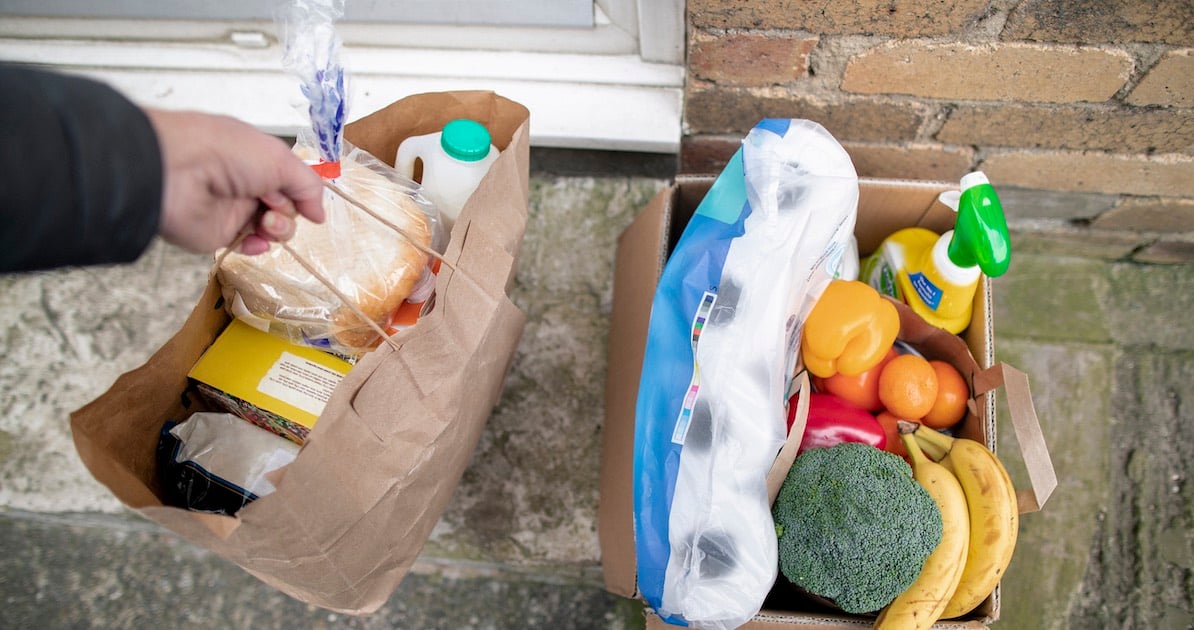Written by SmartSense | Food Safety, Patient Safety, Healthcare, Pharmacy
Explore solutions built for your industry
Our customer-proven solutions monitor medications and food inventories for some of the most recognizable names in the industries of healthcare, food service, and transportation, and logistics. See how our solutions adapt to your industry needs.
SEE SOLUTIONSKroger Health Strengthens Compliance Visibility with SmartSense
Watch The VideoLEARN
Questions? Call +1 (866) 806-2653 to speak to our experts.
Schedule demoQuestions? Contact us.
Call +1 (866) 806-2653 to speak with our experts or get started with a demo.
CONTACT USAbout Us
SmartSense was created to use the power of the Internet of Things (IoT) to help our customers protect the assets most critical to the success of their business.
See our storyCONNECT. PROTECT. RESULTS.
Questions? Call +1 (866) 806-2653 to speak to our experts.
Schedule demoPlease select your login
January 17, 2024
How to Build Risk Mitigation into Your IoT Infrastructure with Sensing-as-a-Service
Healthcare and food service profoundly depend on the public trust. Any deviation that consumers experience regarding medication efficacy and food safety carries the potential for the following risks:
- Threats to health and wellbeing
- Emotional crisis
- Damage to brand equity
- Legal implications
- Increased regulatory scrutiny and reprimand
To prevent or minimize these hazards, processes and workflows must integrate digital technologies that provide executives and management with real-time visibility into quality and safety excursions so that employees will be guided to execute the appropriate corrective actions.
In this post, we demonstrate how an IoT Sensing-as-a-Service solution helps business leaders in healthcare and food service mitigate risk in two specific use cases: hospital pharmacies and direct-to-consumer (DTC) food delivery.
Mitigating Risk in Hospital Pharmacies

High-performance hospital pharmacies operate at the intersection of financial risk and operational risk. Amid the current market volatility, enterprise leaders are pressured to maintain profit margins that keep pace with growing demands for clinical care and prescription medications. Complicating this administrative burden, rigorous pharmaceutical compliance regulations related to safety and efficacy—CDC, FDA, Vaccines for Children Program (VFC), Association for the Advancement of Blood & Biotherapies (AABB) and Boards of Pharmacy (BOP) — create a multitude of risk management issues for pharmacists to juggle.
Strict standards are well-warranted. In the U.S., adverse drug effects are one of the most common medical errors. Accordingly, maintaining continuous compliance ensures the safety and efficacy of medications and vaccines, and in turn, maintains patient health. But when pharmacy management depends primarily on manual workflows and processes, they will find it challenging to maintain a compliant workplace.
For example, a National Library of Medicine study found that responsibilities associated with patient care accounted for more than 80% of a typical pharmacist’s shift. That leaves little time to focus on compliance protocols — and increases the margin for human error. This extra layer of complexity heightens the importance of identifying methods for hospitals to invest in Sensing-as-a-Service solutions and pharmaceutical offerings that drive revenue without putting clinical performance, operational management, or brand trust at risk.
A Key Differentiator: IoT-Enabled Sensing-as-a-Service for Medication and Vaccines
Hospital and retail pharmacies do not operate using the same standard processes and under the same regulations. Whereas retail pharmacists usually focus on routine medical treatments and patient outcomes, hospital pharmacists are engaged in more challenging and complex use cases that require extensive expertise and meticulous inpatient observation. Consequently, low supply chain visibility or mismanaged inventory could literally be a matter of life and death.
The integration of IoT-enabled sensing and monitoring technology enables high-performing hospital pharmacies to improve the accuracy of on-demand inventories. Unlike retail pharmacists, hospital pharmacists lack the flexibility to simply prescribe generic substitutes or “fly in” additional shipments to alleviate out-of-stock vaccines or medications from a mismanaged inventory.
Considering that critical patient outcomes are a priority KPI, hospital pharmacists must have immediate access to the right prescription at the right time. They also need verifiable proof that lifesaving medications, such as temperature-sensitive vaccines, are safe and effective. Otherwise, their ability to provide high-quality clinical care will likely suffer as operational risk escalates.
Compliance Benefits of Sensing-as-a-Service for Pharmacy

By integrating IoT sensing and monitoring technology along touchpoints of the medical supply chain, hospital pharmacies can leverage telemetry data insights to ensure just-in-time inventory orders are managed according to safety standards. Whether it’s a COVID-19 vaccine or a dispensed medication, data-driven decision-making ensures accuracy and empowers managers to reduce financial losses associated with volatile demand and error-prone processes.
Real-time visibility into rapid fluctuations in short-term demand also helps avoid excess inventory that drives waste and overspending. For example, if an on-demand prescription is filled and dispensed into a holding bin but never picked up by a customer, staff can quickly determine whether idling in an uncontrolled environment has affected its efficacy.
At the same time, replacing manual compliance workflows with AI-driven digitalized task allocation and automated reporting capabilities helps avoid regulatory fines and enhances risk management. In turn, the pharmacist’s day-to-day responsibilities are streamlined, freeing up time to focus on acute care.
Mitigating Risk in Direct-to-Consumer Food Service

While consumers have embraced DTC food service models, federal authorities have not kept pace regulating their innovations. For example, the lack of safety compliance rules for meal kit companies poses an increased risk of foodborne illness due to unsafe temperatures and lack of traceability. This regulatory oversight is causing growing concern among many food industry experts as high-profile cases become more frequent.
True, consumers might be able to protect themselves by asking questions about re-heating temperatures, cross-contamination, or cold storage — but, honestly, is that realistic? The real responsibility falls to the e-commerce companies distributing meal kits and the regulatory agencies that define and establish federal compliance standards that govern their operations.
DTC services are currently regulated by state and local governments rather than the FDA. Last year, the FDA and CDC signed a memorandum of understanding to support state, tribal, local, and territorial levels of government with efforts for better transparency of food safety data collection. Nevertheless, DTC companies remain a low priority.
Creating a Culture of Food Safety Compliance and Corrective Action

So the question remains: should responsibility for the food safety compliance of DTC companies fall primarily to federal agencies or current government levels? Regardless of the answer, any level of increased regulation will increase costs for DTC meal delivery services. Those costs must be figured into five-year plans for DTC business models.
Whether increased compliance requirements regulate preparation, transportation, or delivery, their objective should be to create a culture that takes the threat of foodborne illness seriously and builds mechanisms for fast and effective traceability and corrective action. For meal delivery services specifically, creating this culture requires integrating a Sensing-as-a-Service solution into their infrastructure and processes so that critical food safety measurements for temperature and humidity can be logged and analyzed. The ultimate benefits of IoT-enabled technologies are descriptive insights that guide executive decision-making and prescriptive workflows that guide employee behaviors, thereby mitigating risk during all phases of DTC planning and execution.
IoT Technology Innovation Mitigates Risk
Healthcare and food services are facing a critical moment. To ensure safety and compliance, business leaders in both industries must innovate to make optimal business decisions and streamline operations. By integrating Sensing-as-a-Service solutions into their strategies and infrastructure, all organizations — not only pharmacies and DTC food services — can strengthen their overall ability to mitigate risk.
Subscribe to the SmartSense Blog
Stay up-to-date on the evolution of IoT connectivity.
CONNECT. PROTECT. RESULTS.
Learn how our complete critical
environment monitoring solution will help you
connect and transform your business.
Call +1 (866) 806-2653 to speak with our industry
experts or get started by
requesting a demo.